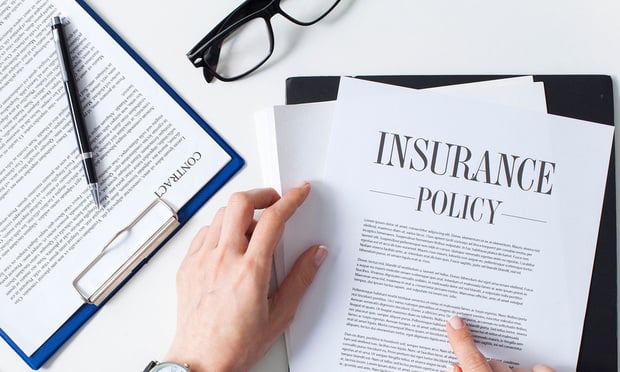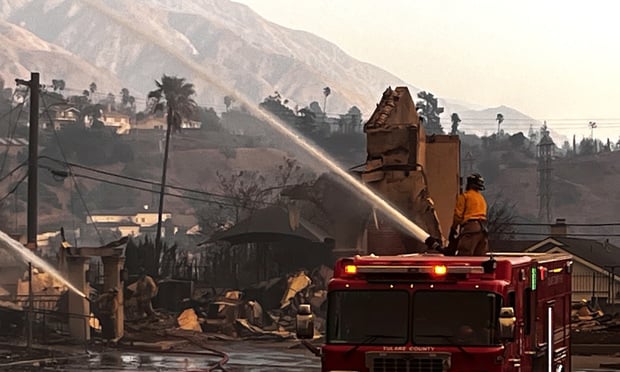Analysis brought to you by the experts at FC&S Online, the unquestioned authority on insurance coverage interpretation and analysis for the P&C industry. To find out more — or to have YOUR coverage question answered — visit the National Underwriter website, or contact the editors via Twitter: @FCSbulletins.
Question: Our insured was driving a non-owned auto. While driving the non-owned auto our insured struck the non-owned auto owner's building. Is there coverage under our liability coverage? We were thinking that perhaps liability exclusion 2 may be applied, since the owner of the car and the owner of the building are the same. A side note, brake failure on the non-owned auto is what caused the damage.
— Connecticut Subscriber
Related: 6 parking lot perils property owners need to pay attention to
Answer: Exclusion 2 would not apply because the car and building are owned by one person, but the insured is not that person. If the insured owned the building, exclusion 2 would apply. But in the described scenario, the exclusion does not apply.
Exclusion 3 wouldn't apply because the property damage happened to the building, which was not rented to, used by, or in the care of the insured. (However, the damage to the non-owned auto might be excluded because it was being used by the insured.)
The section “coverage for damage to your auto” says “we will pay for direct and accidental loss to your covered auto” or any “non-owned auto”. For a non-owned auto, it says “we will provide the broadest coverage applicable to any covered auto” shown in the declarations. (One exception might be if the car was available for the regular use of the insured).
We don't believe any other exclusion applies in this scenario.
So, since it was property damage that the insured caused and for which is the insured is legally responsible due to the auto accident, coverage should be provided. The building should be covered under liability and the car should be covered under property damage, and no other exclusions should apply.
Related: In praise of personal umbrellas
Double the coverage
Question: Our insured was driving a non-owned car that is insured by its owner for physical damage subject to a $500 deductible. He was involved in an accident that damaged the car. He carries physical damage on owned vehicles with a $100 deductible, and has filed a claim on his policy for $400, which is the difference between the deductibles.
— California Subscriber
Answer: A personal auto policy pays for damage to a non-owned vehicle on an excess basis over any other collectible source of recovery. In this case, the physical damage coverage held by the owner of the car will pay first, with the insured driver's non-owned coverage applying as excess. The excess amount is therefore the difference in deductibles, or $400.
Teenagers happen
Question: Our insured rented a car for use while her vehicle was being repaired. Her 15 year-old daughter stole the vehicle and was rear-ended by an unknown motorist. Our insured reported the vehicle stolen, and had not given her daughter permission to use the vehicle. Does the exclusion for “loss to any non-owned auto” when used by you or any “family member” without a reasonable belief that you or that “family member are entitled to do so” apply in this situation?
— Ohio Subscriber
Answer: The rental car does qualify as a non-owned auto, and the daughter is a family member who would otherwise be covered for physical damages to the car while driving the rental. However, because she took the car without permission, she did not have a reasonable belief that she was entitled to drive the vehicle. Therefore, exclusion 9 under Part D of the PAP would apply to preclude coverage for the damage to the rental car by the uninsured motorist.
Related: 8 facts about credit cards and car rental insurance
One more rental car question
Question: I am hoping you could help me interpret the policy language regarding non-owned autos on the personal lines auto policy under Damage to Your Auto. If an insured rents a vehicle for 3 months, would that be considered available for his regular use?
— Indiana Subscriber
Answer: Although “non-owned auto” under Damage to Your Auto, Section C of the PAP often includes rental cars, the rental vehicle still must otherwise meet the definition of a non-owned auto and not be furnished or available for the regular use of the named insured.
In determining whether a vehicle has been “furnished for regular use,” courts consider the general availability of the vehicle and the frequency of use by the insured. A few years ago, the Supreme Court, Appellate Division of New York, found that a rental vehicle did not meet the definition of a non-owned vehicle when it was available for regular use for 55 days. See Elrac, Inc. v. GE Capital Ins. Co., 57 A.D. 3d 833 (N.Y.A.D. 2 Dept., 2008).
So although there is no single objective guideline for determining when a rental car becomes furnished for regular use, most court decisions are pretty consistent with Elrac. Thus, whereas a week's or perhaps even a month's rental of a car would probably qualify as a non-owned auto not readily available for the regular use of the insured, a three month rental — wherein the insured would probably be using the car every day on a regular basis — probably would not.
See also:
Want to continue reading?
Become a Free PropertyCasualty360 Digital Reader
Your access to unlimited PropertyCasualty360 content isn’t changing.
Once you are an ALM digital member, you’ll receive:
- Breaking insurance news and analysis, on-site and via our newsletters and custom alerts
- Weekly Insurance Speak podcast featuring exclusive interviews with industry leaders
- Educational webcasts, white papers, and ebooks from industry thought leaders
- Critical converage of the employee benefits and financial advisory markets on our other ALM sites, BenefitsPRO and ThinkAdvisor
Already have an account? Sign In Now
© 2025 ALM Global, LLC, All Rights Reserved. Request academic re-use from www.copyright.com. All other uses, submit a request to [email protected]. For more information visit Asset & Logo Licensing.








